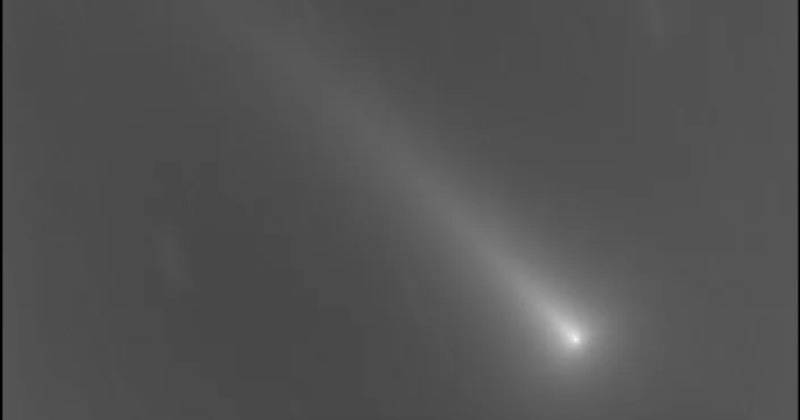
In 2021, it appears that space had saved the best for last, as the arrival of the newly discovered comet, Leonard, will be one of the most attractive events of the year.
The comet was initially observed on January 3 at the Mount Lemmon Observatory, just outside of Tucson, Arizona, by Greg Leonard, a senior researcher at the University of Arizona.
According to Robert Lunsford of the American Meteor Society, the comet will not be the most stunning in history, but it will be ‘the brightest comet this year.’
People around the country are already spotting it in the sky using binoculars and telescopes, and it won’t be long before they can see it with their naked eyes for this once-in-a-lifetime event.
The comet, despite its recent discovery, will not be around for long. Gianluca Masi, an astronomer and the founder of The Virtual Telescope Project, told USA TODAY that Leonard is a long-period comet, which means it doesn’t come around very often.
In fact, the comet hasn’t flown by Earth in almost 70,000 years, and it will be ejected from our solar system after passing past the sun, never to be seen on Earth again.
‘This adds to the excitement of observing this comet because we will be saying ‘goodbye’ to this chilly, small world,’ Masi added.
Comets, according to Masi, are unpredictable and frequently alter direction, making them more or less visible. If Leonard keeps on pace, though, Lunsford estimates that it will have a magnitude brightness of four, the same as ordinary stars.
Unless you live in Antarctica, anybody on the earth can see the comet right now, according to Lunsford. The comet can be seen in the morning sky with binoculars or a telescope until December 13th.
It was 21.7 million miles from Earth on December 12th, the closest it will go to the planet. You’ll have a better chance of seeing it if you can get away from light pollution.
‘With each passing morning, it’s becoming worse,’ Lunsford remarked. ‘You might be able to catch a glimpse of the comet’s tail.’
On December 3, the comet emerged near to Messier 3, a worldwide cluster of stars, according to Masi. According to Lunsford, it appeared to the left of Arcturus, one of the brightest stars visible from Earth and a ‘bright, orange star you can’t miss’ on December 6.

Post Your Comments